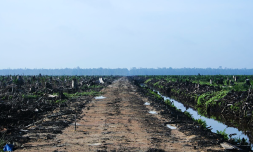Coastal towns near the Mediterranean are grappling with an invasive sea species brought to their waters by international shipping boats. Dealing with this new inhabitant might mean serving them up on thousands of plates across Europe – if only a local appetite for them will grow.
International trade is causing hundreds of animal species to find homes in parts of the world they would have never reached otherwise. This is particularly true for certain marine animals.
As shipping vessels depart from ports, their gigantic engines suck up gallons of seawater known as ballast water. Microorganisms, algae, and fish eggs are also brought along for the ride.
This water – and the life within it – is stored temporarily and offloaded when the boat arrives at its next destination.
Over the last few decades, hundreds of species have been popping up in the Mediterranean due to the release of ballast water. This may not seem like a bad thing until one of those species is deemed invasive to its newfound environment.
Around 2017, one of the 900 unusual species spotted in the Mediterranean Sea was the Chesapeake or Atlantic blue crab. It’s usually found exclusively on the East Coast of the US or in the Gulf of Mexico where it is considered a culinary delicacy.
Its continued presence wouldn’t normally be a standout issue for Europeans, however, the blue crab has been documented destroying the majority of living species in its wake.





















